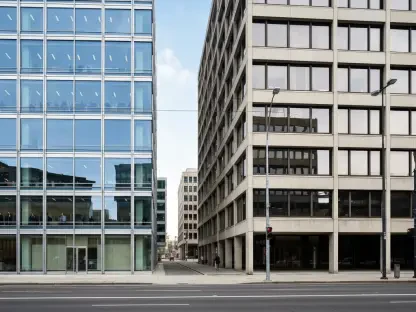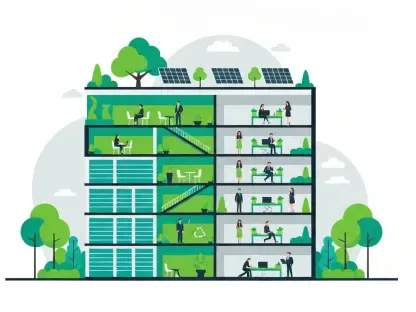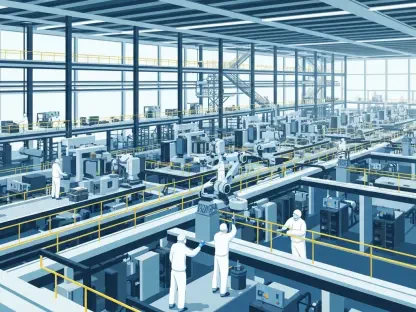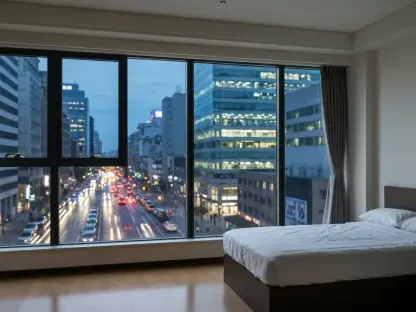In the sprawling urban expanse of Los Angeles, where public transit often competes with car-centric culture, a transformative initiative is quietly reshaping the cityscape and enhancing the daily lives of countless residents. A new modular bus shelter program, spearheaded by a collaborative team including Skidmore, Owings & Merrill (SOM), Designworks, Studio One Eleven, and Tranzito-Vector, has introduced 150 of a planned 3,000 shelters across the greater L.A. area. Far from being mere stopovers for commuters, these structures are redefining what urban infrastructure can achieve by blending minimalist aesthetics with cutting-edge functionality. They stand as a bold response to pressing challenges like climate change, social inequity, and the need for sustainable city planning, offering a glimpse into a future where design serves both practical and societal goals. This ambitious project not only elevates the transit experience but also sets a powerful precedent for cities worldwide grappling with similar issues.
Innovation in Urban Infrastructure
Blending Aesthetics with Practicality
The design of these modular bus shelters draws inspiration from California Modernism, characterized by clean, uncluttered lines and a striking pale green hue that mirrors the tones of the agave attenuata plant, a nod to L.A.’s arid environment. This aesthetic choice is more than superficial; it reflects a deep consideration of the city’s identity and landscape, creating a sense of place for users. Beyond their visual appeal, the shelters are built on a “kit-of-parts” system, a concept articulated by SOM’s Senior Associate Principal Carlos Madrid as a way to ensure adaptability. This modular approach allows for customization in size and configuration to suit varying neighborhood needs, whether in bustling downtown areas or quieter suburban zones. Such flexibility means that the shelters can evolve alongside technological advancements and shifting urban demands, ensuring they remain relevant for years to come. The result is a harmonious balance of form and function, where beauty enhances utility without overshadowing the primary purpose of providing safe, accessible transit spaces.
Future-Proofing Public Spaces
Another remarkable aspect of this initiative lies in its forward-thinking approach to urban infrastructure. The modular nature of the shelters ensures they are not static fixtures but dynamic elements that can be updated or reconfigured as requirements change over time. For instance, components can be replaced or upgraded to integrate emerging technologies, such as advanced digital interfaces or renewable energy solutions. This adaptability is crucial in a city like Los Angeles, where rapid urbanization and evolving transit patterns demand resilient solutions. Moreover, the design prioritizes ease of maintenance and scalability, allowing the city to expand the network of shelters efficiently as the project progresses toward its goal of 3,000 installations. By embedding such foresight into the core of the project, the team behind these shelters demonstrates a commitment to creating public spaces that endure, adapting to future challenges while maintaining their core mission of serving commuters across diverse communities.
Addressing Broader Urban Challenges
Tackling Climate Resilience and Sustainability
With temperatures in Los Angeles frequently soaring, the need for shade in public spaces has never been more critical, especially in underserved areas where access to comfortable transit infrastructure is often limited. These modular bus shelters address this issue head-on by incorporating canopies that provide up to 35% more coverage than previous designs, offering vital protection from the harsh sun. Sustainability is woven into the fabric of the project, with materials and construction methods chosen for their environmental impact and durability. Additionally, the integration of digital tools like E-ink display screens, developed in collaboration with Designworks, brings real-time transit updates, route changes, and weather alerts to riders, enhancing both safety and convenience. This thoughtful combination of physical and technological elements underscores a commitment to climate resilience, ensuring that the shelters not only withstand environmental pressures but also actively contribute to a more livable urban ecosystem for all residents.
Promoting Social Equity and Community Impact
Beyond their environmental benefits, the shelters carry profound social significance by prioritizing equity in urban design. Many of the initial installations have been strategically placed in underprivileged neighborhoods, where access to reliable public transit infrastructure has historically been inadequate. By providing safe, shaded, and information-rich waiting areas, the project directly improves the quality of life for those who rely on buses as their primary mode of transportation. Recognition from prestigious platforms, such as the World Changing Ideas Awards, highlights the initiative’s broader impact on reshaping the public transportation experience. As Carlos Madrid notes, these shelters transcend mere functionality; they embody a vision for a more humane and transit-oriented city. This focus on social good through collaborative design illustrates how urban projects can bridge gaps in equity, fostering inclusivity and ensuring that infrastructure serves as a tool for systemic change rather than perpetuating existing disparities.
Reflecting on a Model for Urban Progress
Lessons from a Pioneering Initiative
Looking back, the rollout of Los Angeles’ modular bus shelters marked a pivotal moment in urban design, showcasing how thoughtful planning and interdisciplinary collaboration could address multifaceted city challenges. The project’s success in blending aesthetic innovation with practical utility offered a blueprint for other municipalities striving to enhance public transit systems. Each shelter, with its adaptable structure and focus on sustainability, stood as a reminder that infrastructure could be both functional and inspiring. The recognition earned through industry awards further validated the approach, cementing the initiative’s place as a benchmark for integrating climate resilience and social equity into urban planning. Reflecting on this achievement, it became clear that the true impact lay in the tangible improvements to daily life for countless commuters who once navigated inadequate transit spaces.
Charting the Path Forward
As the echoes of this transformative project lingered, the focus shifted to actionable next steps for scaling and refining such initiatives. Cities inspired by L.A.’s model were encouraged to prioritize modularity and community needs in their own infrastructure projects, ensuring adaptability to local contexts. Partnerships between architects, technologists, and city planners proved essential in replicating this success, fostering designs that responded to both current demands and future uncertainties. Additionally, integrating advanced digital tools could further enhance user experiences, providing real-time data to improve transit efficiency. Ultimately, the legacy of these shelters pointed toward a broader vision: urban design must evolve as a tool for systemic betterment, addressing environmental and social challenges with equal rigor. This pioneering effort in Los Angeles laid a foundation for future endeavors, urging global cities to reimagine public spaces as catalysts for sustainable, inclusive growth.









